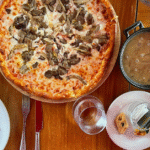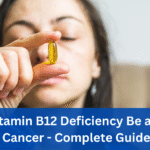Fast food chains have always been adept at tapping into consumer trends, anticipating preferences, and crafting menus that balance indulgence and health consciousness. Among their many offerings, beverage choices play a significant role in customer satisfaction. One drink, in particular, has carved a niche in the beverage landscape—Diet Dr Pepper. But Why Fast Food Chains Serve Diet Dr Pepper?
From brand identity to consumer health trends and strategic partnerships, the presence of Diet Dr Pepper on fast food menus is no coincidence. This article dives into the layered reasons behind its widespread availability and enduring popularity.
1. The Unique Taste Profile of Diet Dr Pepper
Unlike other diet sodas, Diet Dr Pepper stands out for its distinct flavor, often described as a blend of 23 flavors—a closely guarded recipe that includes hints of cherry, licorice, almond, blackberry, and vanilla.
This unique taste profile provides an experience that mimics regular soda more accurately than many other diet offerings. Fast food customers seeking a diet soda that doesn’t taste watered down often gravitate toward Diet Dr Pepper. For fast food brands, offering a diet beverage with high consumer approval helps them cover a broader spectrum of taste preferences.
2. Growing Demand for Low-Calorie Beverages
Fast food chains are increasingly adjusting their menus to accommodate health-conscious customers. As awareness about sugar intake and calorie consumption grows, many consumers are switching to diet alternatives.
Diet Dr Pepper appeals to those who want a low-calorie drink without sacrificing taste. Unlike some diet sodas that are criticized for having a metallic or artificial aftertaste, Diet Dr Pepper maintains a loyal following because of its closer resemblance to the original flavor.
By including it on menus, fast food chains offer a diet drink that feels less like a compromise and more like a genuine treat, helping retain and attract customers trying to maintain dietary goals without giving up indulgent flavors.
3. Brand Loyalty and Recognition
Dr Pepper, founded in the 1880s, is one of America’s most recognizable soft drink brands. With generations of loyal fans, Diet Dr Pepper has become a staple among diet soda drinkers. The brand’s legacy instills a sense of trust and familiarity, which many fast food restaurants aim to leverage.
By offering Diet Dr Pepper, chains can appeal to customers who have an established loyalty to the Dr Pepper family of drinks. In competitive markets, aligning with strong brand identities can create a more attractive experience for patrons who want consistency across dining choices.
4. Exclusive Beverage Contracts and Strategic Partnerships
Most fast food chains have exclusive contracts with either Coca-Cola or PepsiCo, the two giants dominating the soft drink industry. However, Dr Pepper falls under Keurig Dr Pepper (KDP), a separate entity. This makes the presence of Diet Dr Pepper particularly strategic.
Many chains that don’t have exclusive ties to Coca-Cola or PepsiCo—or have clauses allowing exceptions—can choose to serve Dr Pepper and Diet Dr Pepper. Chains like Wendy’s, Sonic Drive-In, Jack in the Box, and Arby’s often include Dr Pepper products due to their agreements with Keurig Dr Pepper or because it enhances their menu’s appeal.
This level of flexibility allows chains to diversify their offerings, tapping into the popularity of Diet Dr Pepper without conflicting with other beverage supply arrangements.
5. Differentiation in a Crowded Market
In the fiercely competitive fast food industry, subtle menu variations can create strong brand differentiation. Most establishments already offer Coca-Cola or Pepsi diet options (e.g., Diet Coke, Coke Zero Sugar, Diet Pepsi). By including Diet Dr Pepper, a chain can stand out.
This choice gives fast food restaurants a unique selling proposition, especially in areas where Dr Pepper is more culturally embedded—such as in the southern United States, where it is deeply beloved.
Serving Diet Dr Pepper not only gives chains more variety but also shows they are listening to a specific segment of their customer base, thereby increasing customer satisfaction and loyalty.
6. Popularity in Regional Markets
Dr Pepper has a particularly strong foothold in Texas and the surrounding southern states. Given its origin in Waco, Texas, the drink enjoys near-cult status in that region. Fast food chains operating in these areas often prioritize Diet Dr Pepper to meet local preferences.
When customers in these regions don’t see Dr Pepper or Diet Dr Pepper on the menu, it can be a dealbreaker, prompting them to choose a different restaurant. This regional loyalty translates into real dollars, motivating fast food operators to include Diet Dr Pepper in their lineup to stay competitive.
7. Appealing to the “Middle Ground” Consumer
Many fast food customers fall into a middle category: they want to indulge, but they also want to balance their choices. This is the customer who might order a burger and fries but opt for a diet soda to offset calorie intake. Diet Dr Pepper fits perfectly into this pattern.
Serving Diet Dr Pepper helps restaurants cater to this behavior by providing a beverage that complements indulgent food while aligning with a “healthier choice” narrative. It’s a strategic way to enable a sense of control or moderation in an otherwise calorie-rich meal.
8. Marketing and Brand Collaborations
Dr Pepper has engaged in clever, nostalgic, and humorous marketing campaigns that enhance its cultural relevance. From the “I’m a Pepper” jingle to celebrity-endorsed Super Bowl ads, the brand has maintained a strong emotional connection with consumers.
Fast food chains benefit from this recognition. When a restaurant serves Diet Dr Pepper, it hitches itself to a well-loved brand that already has a positive public image. It’s a subtle form of co-branding that can influence consumer perception of quality and relevance.
9. Consumer Feedback and Demand Analytics
Fast food chains conduct regular market research, including feedback forms, loyalty program data, and social media listening. Over time, many chains have noted consistent consumer demand for Diet Dr Pepper as an alternative to more traditional diet drinks.
In many chains, customer preferences collected through digital ordering systems or app-based surveys play a direct role in menu decisions. If a significant portion of users request Diet Dr Pepper—or show increased purchase frequency when it’s available—restaurants are incentivized to include it permanently.
10. Dr Pepper’s Association with Indulgence
Even though it’s a diet soda, Diet Dr Pepper retains the rich, indulgent character of its regular counterpart. It pairs well with heavy meals like burgers, fried chicken, tacos, and pizza. This makes it a more complementary beverage choice compared to lighter or more neutral diet sodas.
Fast food meals are designed for maximum flavor impact, and Diet Dr Pepper’s bold profile makes it an ideal companion. It’s not merely a beverage; it’s part of the overall taste experience. For fast food chains, this culinary compatibility is a big reason to keep it on the menu.
11. Innovation and New Product Extensions
Keurig Dr Pepper has continuously invested in new product extensions, such as Cherry Diet Dr Pepper and Caffeine-Free Diet Dr Pepper, which create buzz and reinforce the brand’s image as dynamic and forward-thinking.
Fast food chains that already serve Diet Dr Pepper can benefit from this innovation by introducing limited-time drink variants or promotional campaigns, further driving customer engagement and visits.
12. Loyal Fanbase and Online Communities
Diet Dr Pepper has a surprisingly passionate online fanbase, from Reddit threads to fan-run social media pages. These communities often celebrate chains that carry Diet Dr Pepper and shame those that don’t. This word-of-mouth enthusiasm can help drive foot traffic and sales.
Restaurants aware of this digital buzz often embrace the product to align with vocal customer bases, understanding that the decision can influence social engagement and customer loyalty.
Conclusion: More Than Just a Drink
The decision by fast food chains to serve Diet Dr Pepper is far from arbitrary. It reflects a combination of market demand, strategic branding, regional preferences, and consumer psychology. For many consumers, Diet Dr Pepper isn’t just a drink—it’s a part of their identity and dining ritual.
Fast food establishments, keen on maximizing both customer satisfaction and competitive edge, see Diet Dr Pepper as a low-risk, high-reward addition to their beverage lineup. Whether you’re a die-hard fan or a casual soda drinker, chances are you’ve seen Diet Dr Pepper proudly offered at your local drive-thru—and now you know why.
Q1: Why do so many fast food chains serve Diet Dr Pepper?
Because of its unique flavor, brand loyalty, regional popularity, and growing demand for low-calorie beverages.
Q2: Is Diet Dr Pepper healthier than regular soda?
It has zero calories and no sugar, making it a preferred option for those managing calorie or sugar intake.
Q3: Does every fast food chain serve Diet Dr Pepper?
No, availability depends on the chain’s beverage supplier and regional preferences.
Q4: What makes Diet Dr Pepper taste different from other diet sodas?
Its 23-flavor blend offers a richer, more complex taste that closely mimics regular Dr Pepper.
Q5: Why is Diet Dr Pepper more common in the southern U.S.?
Dr Pepper originated in Texas and has strong regional loyalty, especially in southern states.





